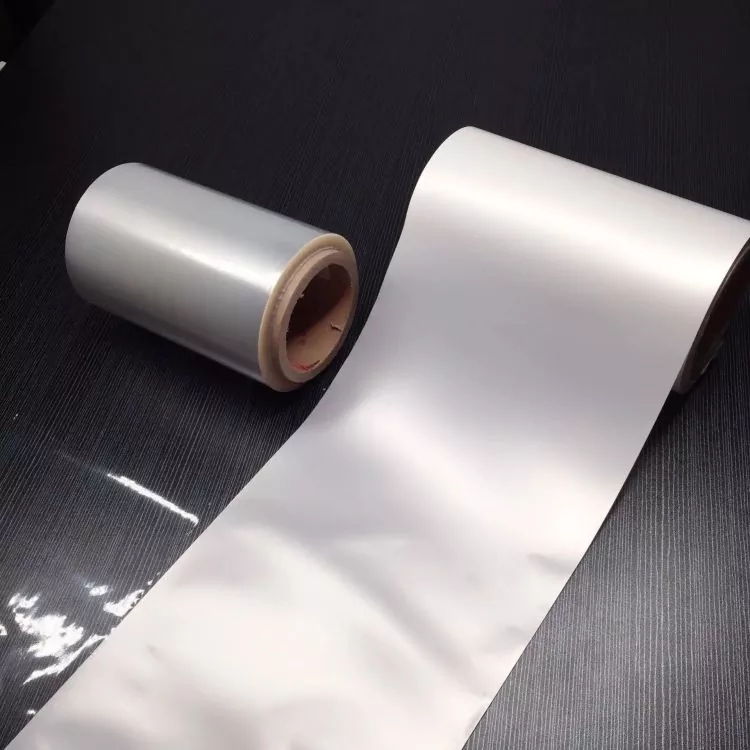
- English
- Español
- Português
- русский
- Français
- 日本語
- Deutsch
- tiếng Việt
- Italiano
- Nederlands
- ภาษาไทย
- Polski
- 한국어
- Svenska
- magyar
- Malay
- বাংলা ভাষার
- Dansk
- Suomi
- हिन्दी
- Pilipino
- Türkçe
- Gaeilge
- العربية
- Indonesia
- Norsk
- تمل
- český
- ελληνικά
- український
- Javanese
- فارسی
- தமிழ்
- తెలుగు
- नेपाली
- Burmese
- български
- ລາວ
- Latine
- Қазақша
- Euskal
- Azərbaycan
- Slovenský jazyk
- Македонски
- Lietuvos
- Eesti Keel
- Română
- Slovenski
- मराठी
- Srpski језик
CPP high temperature cooking film
2024-07-05
With the development of our country's economy, the prosperity of tourism, and the rise of the Golden Week economy, people's demand for convenience foods is increasing. Various soft cans and high-temperature cooking foods are not only diverse in variety but also in huge quantities. A large number of food packaging products with high barrier properties, high impact resistance, high-temperature cooking resistance, high-pressure resistance, and medium resistance have emerged, thus ensuring the convenience of food. It is fresh and nutritious, extending the shelf life of convenience foods, and is the best packaging material for soft cans.

High-temperature cooking can kill all bacteria (135°C) and has a long shelf life. High-barrier transparent bags have a shelf life of about one year, and aluminum foil retort bags have a shelf life of about two years. Oxygen and moisture permeability are close to zero. Food is not prone to spoilage; has high heat intensity; can be stored at room temperature.
Its raw materials mainly include: PET (mainly B0PET), PA (mainly B0PA), PP (mainly RCPP and SCPP), AL (mainly aluminum foil), co-extruded PA film, co-extruded EV0H film, PVDC Coating, etc.
Classification of high temperature cooking bags:
1. Classification by structure
Category A: PA/CPP, PET/CPP. Water vapor permeability: ≤15g/(m·24h); Oxygen permeability: ≤120cm/(m2·24h·0.1HPa).
Category B: PA/AL/CPP, PET/AL/CPP. Water vapor permeability: ≤ 0.5g/(m ·24h); Oxygen permeability: ≤0.5cm/(m ·24h 0.1MPa).
Category C: PET/PA/AL/CPP, PET/AL/PA/CPP. Water vapor permeability: ≤0.5g/(m·24h); Oxygen permeability: ≤0.5cm/(m·24h·0.1MPa).
2. Classify by cooking temperature (cooking time is about 30-45 minutes)
When the relative pressure is PS110 pounds/inch, the corresponding temperature is l15cC; the shelf life is about 3 months.
When the relative pressure is Ps115 pounds/inch, the corresponding temperature is 121cC; the shelf life is about 6 months.
When the relative pressure is PS120 pounds/inch, the corresponding temperature is 126cC; the shelf life is approximately 12 months (transparent bag).
When the relative pressure is PS130 pounds/inch, the corresponding temperature is 135cC; the shelf life is approximately 24 months (aluminum foil bag).
Of course, the shelf life also has a lot to do with the barrier properties of the retort bag and the type of food.
Features of medium temperature cooking CPP (RCPP) and high temperature cooking CPP (SCPP):
The main characteristics of the retort grade CPP film are: good flatness; high tensile strength; high heat sealing strength; high heat sealing temperature (required to ensure high heat sealing strength under high temperature and pressure during cooking); high impact strength (required The ability to resist puncture and bag breakage under high temperature and pressure during cooking); moderate elongation at break; good medium resistance, etc.
The main raw material of retort grade CPP film is block copolymer impact-resistant polypropylene. Its performance requirements are: Vicat softening point temperature should be greater than the cooking temperature; haze should be as small as possible (because the haze of block copolymerization is relatively large); impact resistance should be good; medium resistance should be good; fish eyes and crystal points should be as much as possible And less.
Block copolymer impact-resistant polypropylene is difficult to produce and market development is difficult, so there are very few domestic products and basically all raw materials are imported. Due to the relatively high technical requirements and cost of film-grade block copolymer impact-resistant polypropylene raw materials, some domestic manufacturers are trying to use high heat-sealing temperature two-component heat-sealable polypropylene materials and injection molding-grade block copolymer impact-resistant polypropylene materials instead. Film-grade block copolymer impact-resistant polypropylene raw material.
When using two-component heat-sealing polypropylene material with a high heat-sealing temperature, there is no problem with the heat-sealing temperature and heat strength, the haze is also very good, and there are few fish eyes and crystal points, but the tensile strength, impact resistance, and medium resistance are Performance indicators such as toughness and elongation at break may be slightly worse.
When using injection molding grade block copolymer impact-resistant polypropylene material, the impact resistance, medium resistance and other indicators are acceptable, but there are many fish eyes and crystal points, and the tensile strength, elongation at break, haze and other performance indicators may be required. Not even close.
High temperature cooking ink:
The first is the selection of the ink binder (to ensure the stability of the binder under high-temperature cooking temperatures); the second is the selection of ink colorants (to ensure the color stability of the colorant under high-temperature cooking temperatures); the third is the ink Selection of curing agent (pay attention to the selection of curing agent when using two-component ink).
Pay attention to the difference: ordinary retort-resistant ink; high-temperature retort-resistant ink; ultra-high-temperature retort-resistant ink. Also pay attention to the problem of ink color transfer, the problem of adding new curing agent when two-component residual ink is mixed with new ink, and the problem of reduced scratch resistance when curing agent is excessive.
High temperature resistant cooking glue:
High-temperature-resistant retort bags need to undergo high-temperature cooking and sterilization. High-temperature-resistant 121cc and ultra-high-temperature 135cc retort-resistant adhesives should be used. Ordinary adhesives must not be used. Ordinary adhesives are not temperature-resistant. Composite film bags usually delaminate and peel off below 80L°C. Very low intensity. The high-temperature retort-resistant adhesive must have good adhesion to treated PET, polyolefin, aluminum foil, aluminum-coated foil, PVDC coating and processed extruded thermal film layer, as well as excellent retortability and resistance to chemical media. Aggressive.
The main ingredients of general two-component polyurethane adhesives are: a mixture of polyester polyols (polyester polyurethane) and modified isocyanate adduct (polyisocyanate). During use, care should be taken to ensure the dry coating amount, the solvent residue should be as small as possible, and the curing should be sufficient.
If the amount of curing agent is too small, the degree of cross-linking between the curing agent and the resin will be low, and the adhesion strength, heat resistance, and hydrolysis resistance of the ink layer will be reduced; if it is too much, excessive cross-linking will occur and the impact will be high. Intermolecular crystallization and microscopic phase separation increase the cohesion of the glue layer and excessive shrinkage of the ink layer, causing delamination. If the curing time is not enough and the cross-linking is insufficient, the ink layer will become warmer and the hydrolyzability will decrease; if the curing time is too long or the curing temperature is too high, it will be excessively glued and the peel strength will decrease. For mass-produced retort bags, the retort performance should be confirmed before use.
New high barrier retort film:
With the successive commissioning of seven-layer co-extruded cast film production lines, seven-layer and nine-layer blown film production lines, as well as various high-barrier film production lines, the raw materials for the production of new high-barrier retort bags have become more abundant. Five-layer co-extruded films mainly include: PP/AC/EV0H/AC/PP or PE/AC/EV0H/AC/PE. Seven-layer co-extruded films mainly include: PP/AC/PA/EV0H/PA/AC/PP or PE/AC/PA/EV0H/AC/PA/PE.
High barrier composite substrates include: B0EV0H or C-EV0H, PVDC/B0EV0H/PVDC (K-EV0H), PVDC/B0PVA/PVDC (K-pVA), PVDC/BOPA/PVDC (K PA), PVDC/BOPET/PVDC (K-PET), PVDC (copolymer blown film), etc.
The use of these new packaging materials not only greatly extends the shelf life of food and maintains the freshness and nutrition of food to the maximum extent, but also reduces the phenomenon of package breakage during vacuuming, high pressure, and pressure fluctuations to a considerable extent, thereby greatly reducing the risk of food packaging. It reduces costs to a certain extent and popularizes the packaging of high-end convenience foods.



